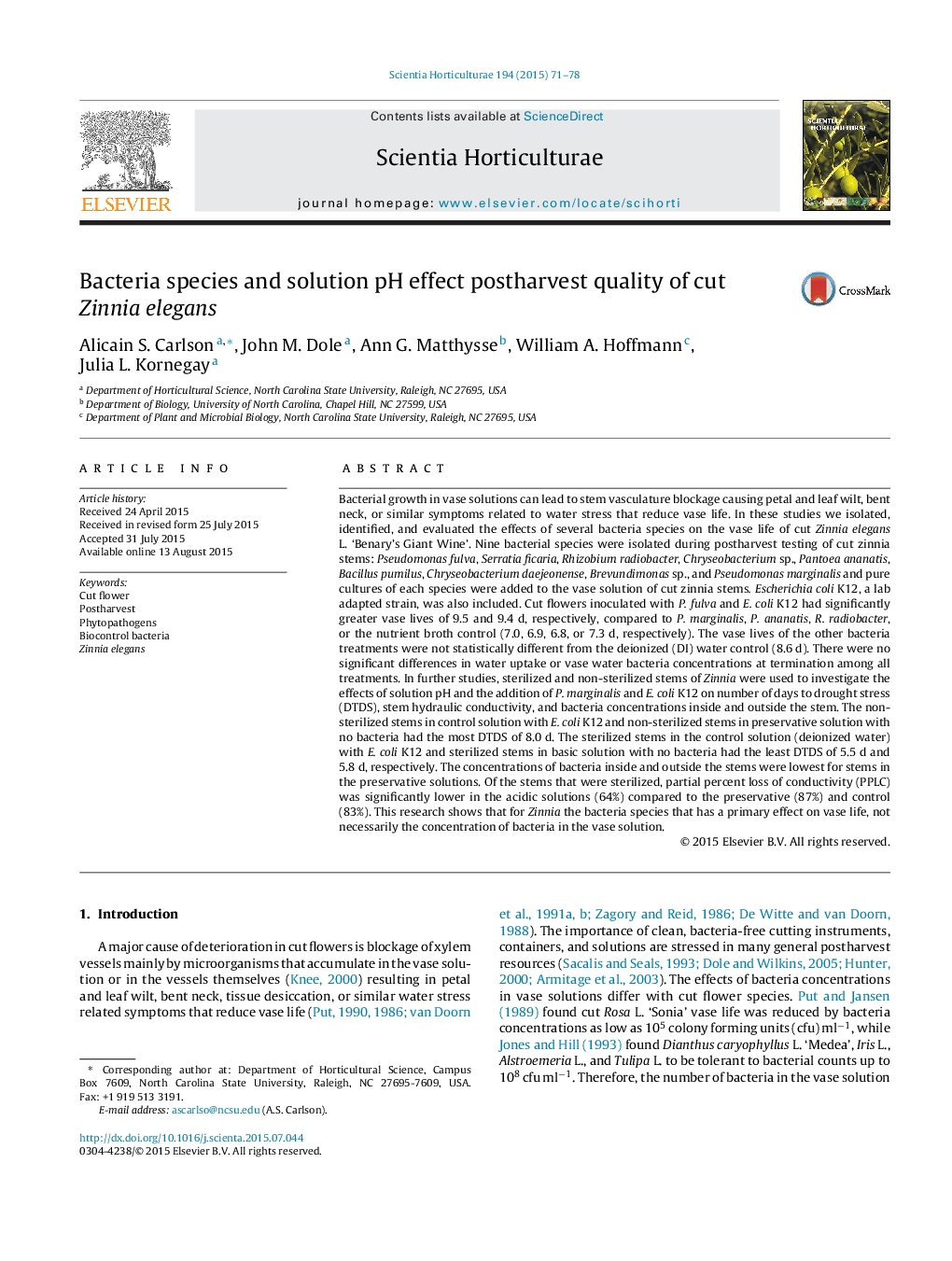| کد مقاله | کد نشریه | سال انتشار | مقاله انگلیسی | نسخه تمام متن |
|---|---|---|---|---|
| 4566317 | 1628804 | 2015 | 8 صفحه PDF | دانلود رایگان |

• Different bacteria species have variable effects on vase life of cut Zinnia.
• Concentration of bacteria on and in the stem were lowest in preservative treatments.
• Acidic solutions had the least reduction of partial stem hydraulic conductivity.
• There were no significant differences in water uptake among all treatments.
• Bacteria species has the most effect on postharvest rather than concentration.
Bacterial growth in vase solutions can lead to stem vasculature blockage causing petal and leaf wilt, bent neck, or similar symptoms related to water stress that reduce vase life. In these studies we isolated, identified, and evaluated the effects of several bacteria species on the vase life of cut Zinnia elegans L. ‘Benary’s Giant Wine’. Nine bacterial species were isolated during postharvest testing of cut zinnia stems: Pseudomonas fulva, Serratia ficaria, Rhizobium radiobacter, Chryseobacterium sp., Pantoea ananatis, Bacillus pumilus, Chryseobacterium daejeonense, Brevundimonas sp., and Pseudomonas marginalis and pure cultures of each species were added to the vase solution of cut zinnia stems. Escherichia coli K12, a lab adapted strain, was also included. Cut flowers inoculated with P. fulva and E. coli K12 had significantly greater vase lives of 9.5 and 9.4 d, respectively, compared to P. marginalis, P. ananatis, R. radiobacter, or the nutrient broth control (7.0, 6.9, 6.8, or 7.3 d, respectively). The vase lives of the other bacteria treatments were not statistically different from the deionized (DI) water control (8.6 d). There were no significant differences in water uptake or vase water bacteria concentrations at termination among all treatments. In further studies, sterilized and non-sterilized stems of Zinnia were used to investigate the effects of solution pH and the addition of P. marginalis and E. coli K12 on number of days to drought stress (DTDS), stem hydraulic conductivity, and bacteria concentrations inside and outside the stem. The non-sterilized stems in control solution with E. coli K12 and non-sterilized stems in preservative solution with no bacteria had the most DTDS of 8.0 d. The sterilized stems in the control solution (deionized water) with E. coli K12 and sterilized stems in basic solution with no bacteria had the least DTDS of 5.5 d and 5.8 d, respectively. The concentrations of bacteria inside and outside the stems were lowest for stems in the preservative solutions. Of the stems that were sterilized, partial percent loss of conductivity (PPLC) was significantly lower in the acidic solutions (64%) compared to the preservative (87%) and control (83%). This research shows that for Zinnia the bacteria species that has a primary effect on vase life, not necessarily the concentration of bacteria in the vase solution.
Journal: Scientia Horticulturae - Volume 194, 14 October 2015, Pages 71–78